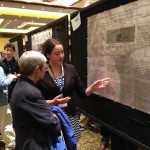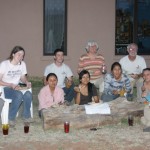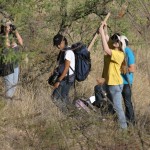 The entire lab packed up their data and traveled to the SICB meeting in Austin, TX January 3-7. The big day for the lab was Monday, January 6 when Don Powers gave a talk in the morning entitled “Physiological Sensitivity of Hummingbirds to Warming Environmental Temperatures” where he summarized data from this past summer. Later that afternoon all the students present posters in which specific projects were covered in greater depth. Specific posters presented were:
The entire lab packed up their data and traveled to the SICB meeting in Austin, TX January 3-7. The big day for the lab was Monday, January 6 when Don Powers gave a talk in the morning entitled “Physiological Sensitivity of Hummingbirds to Warming Environmental Temperatures” where he summarized data from this past summer. Later that afternoon all the students present posters in which specific projects were covered in greater depth. Specific posters presented were:
Influence of Environmental Temperature on Heat Dissipation in Hummingbirds (Katie Langland)
Is the Use of Torpor by Hummingbirds Limited in Landscapes with Warm Nighttime Temperatures? (Rebecca Schroeder)
Assessing Effects of Temperature on Daily Energy Expenditure in Hummingbirds Using a Non-Invasive Doubly Labeled Water Protocol (Joseph Canepa)
Using an Endotherm Energetic Model to Predict Hovering Metabolic Rate in Hummingbirds (Sean Powers)
All the students did really well at the meeting. One poster judge who judged Becca’s poster went out of his way to tell us how exceptionally well Becca did presenting her data. This is not surprising. Even though the lab is staffed only with undergraduates, our students routinely engage meeting attendees with a solid understanding of the science associated with their projects.



